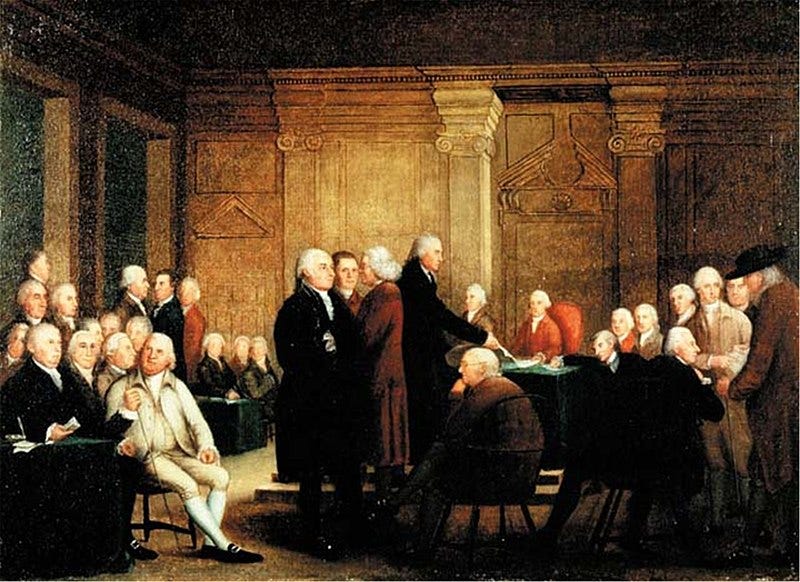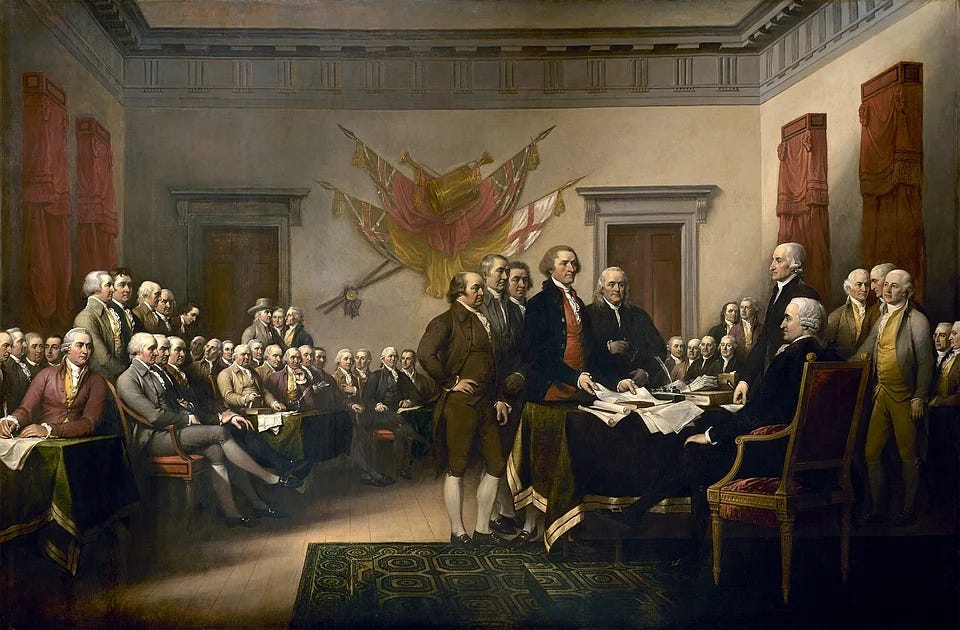Understanding the Declaration of Independence: The Story of How America Became Its Own Country
When you hear people talk about “freedom,” “independence,” or “the Founding Fathers,” they’re often talking about the Declaration of Independence.
The Declaration of Independence is a public letter (a message meant to be shared) that stated the 13 colonies in North America no longer wanted to be ruled by Great Britain (a country across the ocean that was in charge of the colonies). In short, it’s a breakup letter with the King of England. It says, “We want to be our own country.”

The Declaration of Independence is one of the most important documents in American history. It was written in 1776, during a time when the 13 colonies in North America were still controlled by Great Britain, a powerful country across the ocean.
The people living in the colonies were upset because the King of England, King George III, was making laws and forcing them to pay taxes without letting them have any say in how things were run. This was often called "taxation without representation," which means they had to pay money to the government even though they had no voice or vote in it. Many colonists felt this was unfair and disrespectful.
The King also sent British soldiers to live in colonists’ homes and punished people who spoke out against his rule. The colonists tried many times to solve these problems peacefully, but nothing changed. Eventually, they decided it was time to break away and start their own country.
To explain this decision to the world, colonial leaders wrote the Declaration of Independence. It was mainly written by a man named Thomas Jefferson, but he worked with four other men: John Adams, Benjamin Franklin, Roger Sherman, and Robert Livingston. Together, they were chosen by the Second Continental Congress, which was a group of leaders from the colonies who met to make decisions about how to handle their problems with Britain. The final version of the Declaration was accepted on July 4, 1776, which is now celebrated every year in the United States as Independence Day.

The Declaration of Independence has a few key parts. It begins with an introduction that says when one group of people decides to separate from another, they should clearly explain why.
After that, it shares some very important beliefs about government and people’s rights. It says that all people are created equal, which means no one is born with more value or rights than anyone else. It also says that all people are born with certain natural rights, which means rights they are supposed to have just for being human. These include the right to live, the right to be free (called liberty), and the right to pursue happiness, which means the chance to try and build a good life for themselves.
The Declaration explains that the main job of any government is to protect these rights. If a government becomes unfair or harmful and starts taking away people’s rights instead of protecting them, the people have the right to change the government or even replace it with a better one.
These ideas came from something called Enlightenment philosophy, which was a way of thinking that came from European writers like John Locke. These thinkers believed that people should use reason, and that everyone deserves fairness, freedom, and respect from their leaders.
After sharing these beliefs, the Declaration lists all the ways the King of England had treated the colonies unfairly. This part was meant to show that the colonists were not making a sudden or careless decision. They had real reasons for wanting independence, and they wanted other countries to understand and support them.
Finally, the document clearly says that the colonies are now free and independent states. This means they were no longer under the rule of the King and were forming their own country: the United States of America.
The Declaration of Independence is important not just because it helped start a new country, but because of the powerful ideas it contains. Even today, people use the Declaration’s message when they talk about justice, civil rights (fair and equal treatment for everyone), and the importance of having a government that listens to the people. It reminds us that freedom, equality (everyone being treated the same and having the same rights), and the right to be heard are the foundation of American democracy.
Understanding the Declaration of Independence helps people better understand where the United States came from, and why it still matters today.
Sources and Additional Readings
Declaration of Independence (1776): National Archives
The Declaration of Independence: A History: U.S. National Archives
Understanding the Declaration of Independence: Library of Congress
The Declaration of Independence, Full Text: National Constitution Center
What the Declaration of Independence Really Means by 'Pursuit of Happiness': Smithsonian Magazine
Founding Documents in Plain English: American Bar Association
The Enlightenment and the American Revolution: Khan Academy,
Teaching the Declaration of Independence: National Endowment for the Humanities (EDSITEment)


